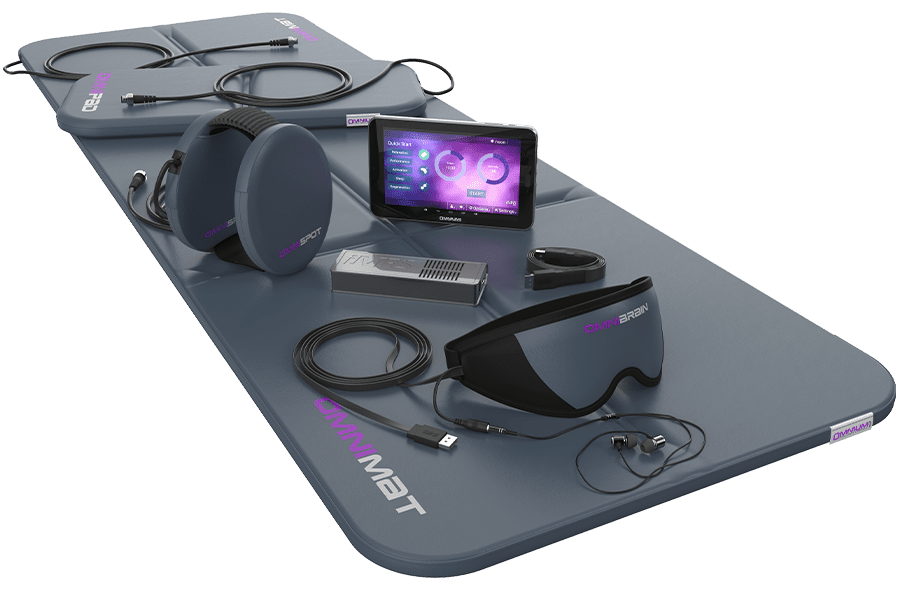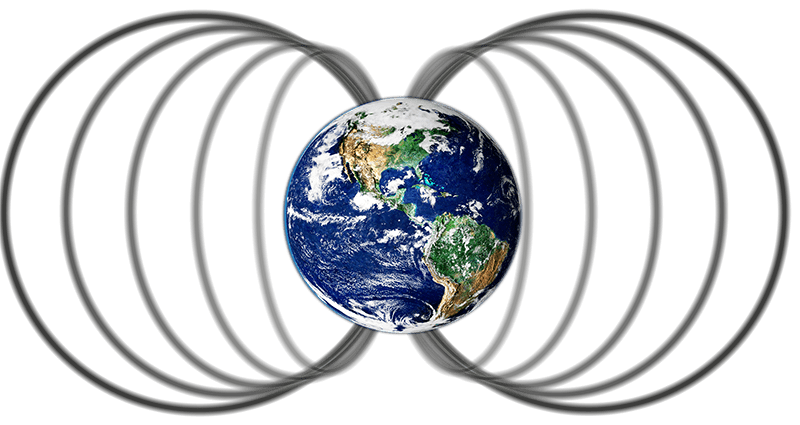To understand how the body interacts with and responds to magnetic fields, we need to recognize how much our bodies are bioenergetic organisms themselves. This requires a little digression into physics:
We all live in an electromagnetic world.
The Earth’s magnetic field is generated by the friction of masses in the liquid, iron-rich outer core of the Earth, creating a magnetic flux density of about 50 microTesla – tiny, but without this magnetic field, life on Earth would be impossible.
To exist in this electromagnetic world, our bodies must be part of it.
The human brain is undoubtedly a fascinating construct. It consists of about 100 billion nerve cells, called neurons, and trillions of connections between them. This means that there are more neuronal connections in one cubic centimeter of brain tissue than there are stars in the Milky Way! This immense neural network is responsible for everything related to human existence. From sensory perception to thought to every bodily function, everything is controlled by the flow of data through the brain’s neural network. This data is transmitted by electricity from one neuron to the next. When millions of neurons communicate simultaneously, a significant amount of electrical activity is generated, which can be detected with an EEG (electroencephalograph).
Wherever electricity flows, magnetic fields are created.
This extraordinary amount of electrical activity that keeps our bodies alive naturally generates its own magnetic fields. This is because wherever electricity flows, i.e. charges are moved, a proportional magnetic field is created according to Ampere’s Law.
Electricity and Magnetism Go Hand in Hand
James Maxwell, the founder of electromagnetism, showed how electricity and magnetism go hand in hand. His equations – called Maxwell’s equations – are the basis of electricity and magnetism. One of these equations is the aforementioned Ampere’s Law.
Most people assume that this electrical activity is limited to the nervous system, but the vast majority of chemical reactions in the body involve the movement of charged particles (ions). Considering that most of the fluids in the body are actually electrolytes, ions dissolved in liquid, the human body can be compared to a large battery that generates electricity and needs to be recharged from time to time.
The Bioelectromagnetic Organism
Once the connection is made between the magnetic aspects of the human body and its biophysical chemistry, it becomes easier to see the body as a dynamic, ever-changing bioelectric and therefore biomagnetic organism, subject to all the physical laws of electromagnetism.
This means that the body has not only a vascular system and a nervous system, but also a less obvious, complex electromagnetic system.
The body’s biomagnetic fields, although extremely low in intensity, are measurable. Magnetoencephalography (MEG) and magnetocardiography (MCG) measure the magnetic fields generated by electrical activity in the body’s organs and are now used in medical diagnosis.
The role of the cell membrane
The body’s electrical activity takes place primarily in the cell membrane. Whether it is the membrane of a nerve cell or a muscle cell, it is crucial for maintaining the structure of the cell and protecting its contents. But it also separates the extracellular from the intracellular space, acting as a kind of gatekeeper that opens and closes channels and determines which ions can flow.
The Transmembrane Potential
The cell membrane itself has a voltage, called the transmembrane potential, which results from the unequal distribution of electrical charge between the inside and outside of the cell. Specifically, in the human body, the intracellular space is negatively charged relative to the extracellular space. This charge is called the transmembrane or resting potential.
The transmembrane potential and the opening and closing of these ion channels is the definitive mechanism for the excitability of the cell, the triggering of action potentials, and thus the transmission of stimuli.
When the channels are closed, the cell membrane is at its resting potential, and when they are open, it is at its action potential.
The Action Potential
The action potential is the transmission of electrical excitation by changing the membrane potential. Action potentials in cells are elementary for any form of excitation transmission and thus a necessary condition for life.
Action potentials occur in excitable tissues, such as nerve or muscle fibers, when a changing resting potential reaches a certain threshold. An action potential is an “all or nothing” event – either an action potential is triggered or it is not.
Ion channels cannot be half open or half closed, there is no in-between state.
When all channels are open, the membrane potential is high enough to reverse the polarity of the membrane. The channels then close and the membrane returns to its resting potential.
This is an ebb and flow cycle of cellular energy activity and is the basis for all living organisms.
So an action potential creates an exchange of ions and thus a movement of charge. And this, as we have learned, generates a proportional magnetic field according to Ampere’s Law.
Charge means life
Charge potentials play different roles depending on the cell type, but are generally responsible for cellular communication or activation of cellular processes. For example, muscle cells use voltage potentials as a first step to trigger action potentials and thus muscle contractions.
Since all potentials are controlled by charge, they can be influenced by magnetic fields.
PEMF vs. electrostimulation
In many ways, PEMF therapy is not so different from electrical stimulation. The main difference is that PEMF therapy induces current in the tissue, while electrical stimulation only conducts current to the tissue.
Magnetic fields as a vehicle for electrical energy
Because PEMF therapy uses magnetic fields as a transport medium for stimulation and can pass through biological tissues unimpeded, it can induce charges deep within the body. It is also non-invasive, safer and more tolerable.
Because PEMFs induce physiological ionic shifts in tissues, they can only produce as much charge as they are naturally capable of. Tissues cannot be overcharged with PEMFs.
Electrostimulation, on the other hand, can actually cause burns because it uses externally applied electrical energy.
Magnetic Fields and Charge
Magnetic fields affect charged particles, so any element or process of the human body that relies on charge can be directly affected by magnetic fields.
PEMFs have been shown to improve cell membrane function by helping to restore a healthy transmembrane potential and revitalize the cell.
This is especially true for sodium/potassium and calcium ion channels. The influx and efflux of calcium at the cell is particularly important for normalizing cell function. The best-studied effects of PEMFs are the alteration of these very ion channels.
In particular, these effects of PEMFs on calcium channels appear to be responsible for most of the physiological effects of PEMFs.


